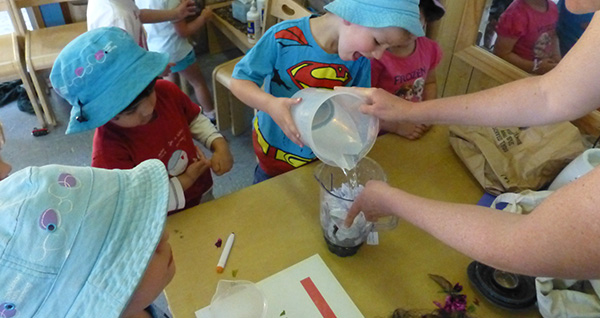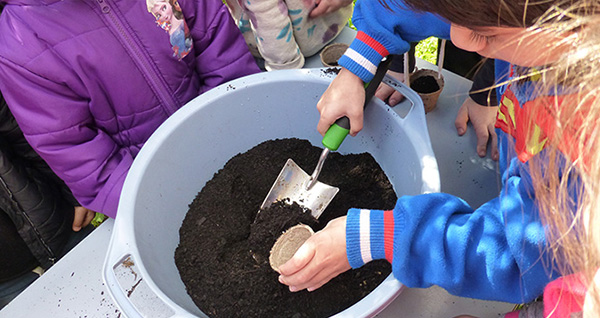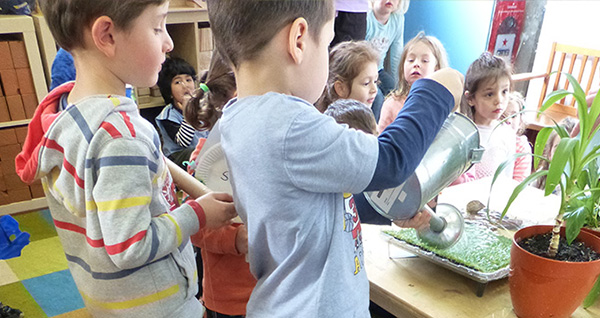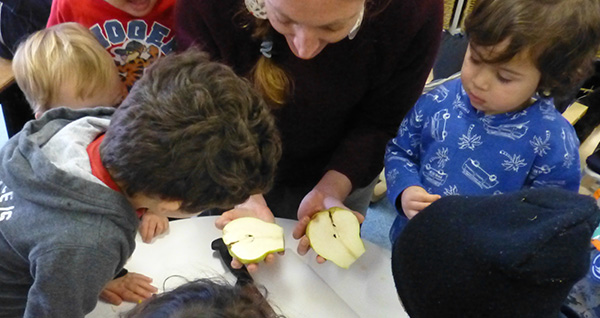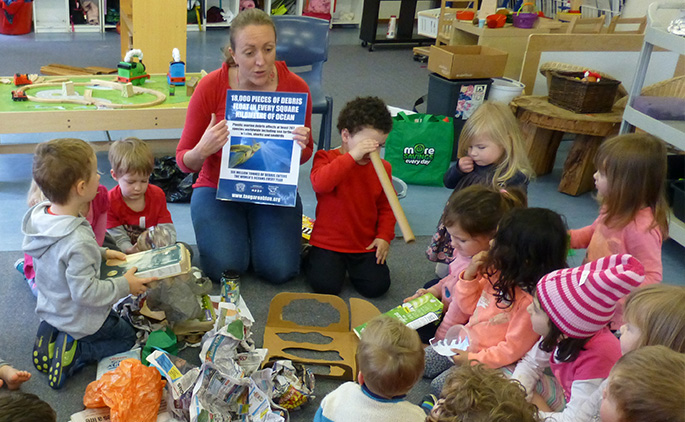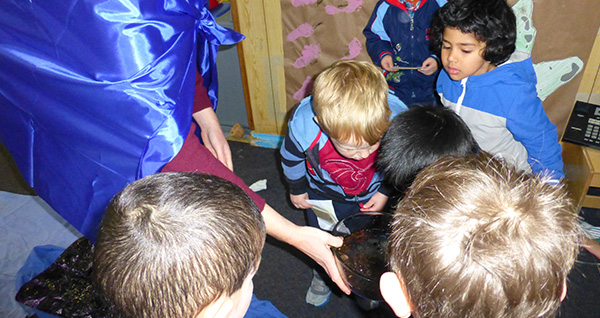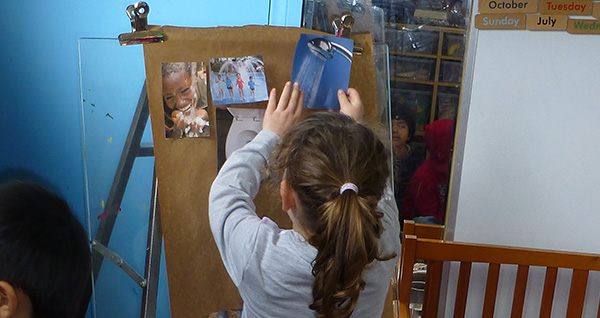
Terrariums are easy to look after, look beautiful and don’t take up much space. You can make them using old, clean jars or bottles which teaches children about reusing items that could otherwise end up in landfill. Making a terrarium is also a fantastic science investigation for kids to learn about growing their own plants and exploring the water cycle in action.
Terrariums are their own little ecosystem. There are 2 main types of terrariums – open and closed. Closed terrariums create a miniature water cycle. They are usually in transparent, sealable containers. Open terrariums are open to the outside environment but need to receive water.
This guide will take you through the step-by-step process of how to make a closed terrarium. A closed terrarium has everything it needs to thrive – soil for nutrients, recycled air, and water. Plants and soil release water vapor and this condenses to be used again. Terrariums are best in bright, indirect sunlight.
What you will need to make a terrarium
A clear container
Used glass jars or clear plastic bottles make great terrariums. Do you have a suitable container at your home or work that you can clean and reuse? Make sure there is enough space at the top of the container to reach your hand in for easy planting and maintenance. If you don’t have any suitable containers at home, ask around with friends or neighbors, or visit your local Op Shop. As a last resort, Kmart will have you covered.
*Tip: avoid bottles with a bare cork lid as mold will likely accumulate with the moisture.
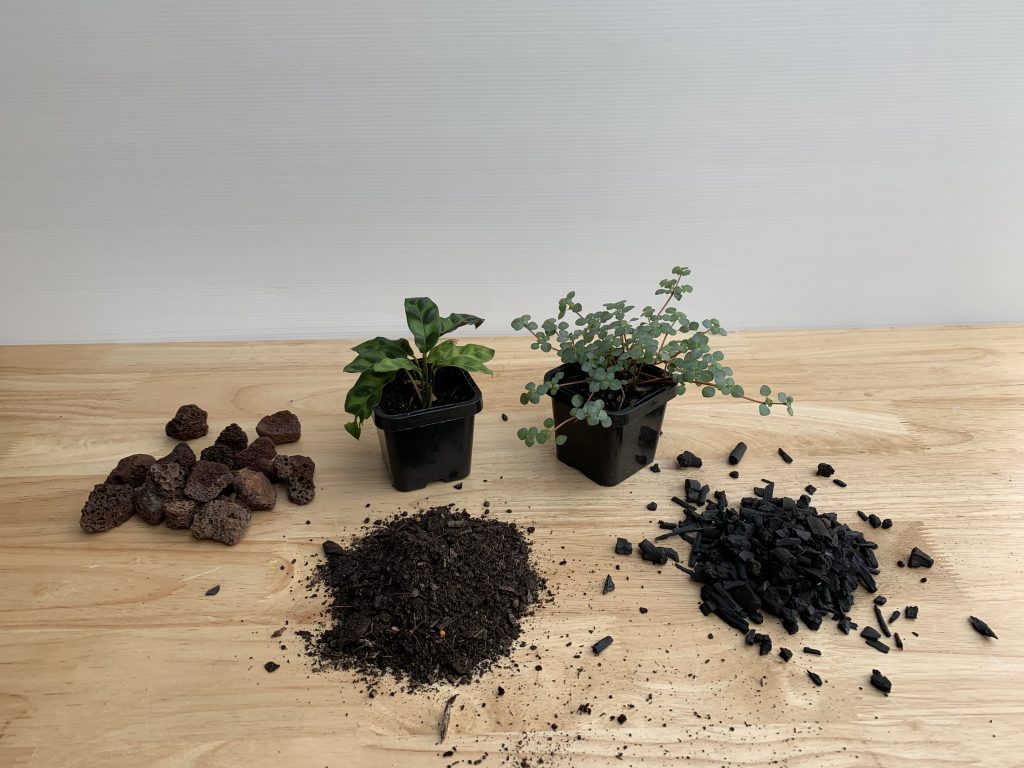
Plants
These plants make good terrarium plants: ferns, mosses, Calathea, Orchids, Philodendron, African Violets, Peperomia, Fittonia, Hypoestes, Crotons, or Cryptanthus. Do you have plants growing around the garden that you can use instead of buying? You can find moss in parks on trees, in cracks of pathways or other shady spots. Most nurseries stock plants suitable for a terrarium. Ask nursery staff for help if you’re not sure. A general guide is you will be able to plant one small plant every 5-8 cm’s. If your container is 13cm’s in diameter, you can safely plant 2 small plants plus moss. Not all plants will thrive in a terrarium environment. If plants brown or die, remove and replace them with another type of plant. It may take some trial and error to get the terrarium thriving.
Potting compost or soil
The soil needs to be clean and high in organic matter. Most nurseries have bagged soil suitable for terrariums. Bagged soil should come sterilized making it ready to use without preparation. Or alternatively, you could try using soil from your garden.
Pebbles or rocks
As terrariums have no drainage hole, pebbles or rocks down the bottom help to prevent the system from building up stagnant moisture in the soil. For this guide, we used red lava rocks from Bunnings but if you have some small rocks or pebbles lying around the house, give them a rinse and use these instead. Interesting shaped or colored rocks are also perfect for decorations.
Activated or horticultural charcoal
A layer of activated charcoal over the rocks or pebbles acts as a filter that pulls toxins and bacteria from the soil and water. This means your terrarium won’t get too smelly! We used horticultural charcoal from Bunnings for this guide.
Spray bottle
Optional (to rinse down the inside walls of the terrarium with water after you’ve finished). You can also do this with your hands.
Steps to making a terrarium

Step 1
Wash and dry your container (inside and out). Place a small layer of rinsed, red lava rock at the bottom of the container. Remember you will be adding 3 layers of ingredients before the plants.

Step 2
Add a layer of activated or horticultural charcoal on top of the rocks or pebbles.
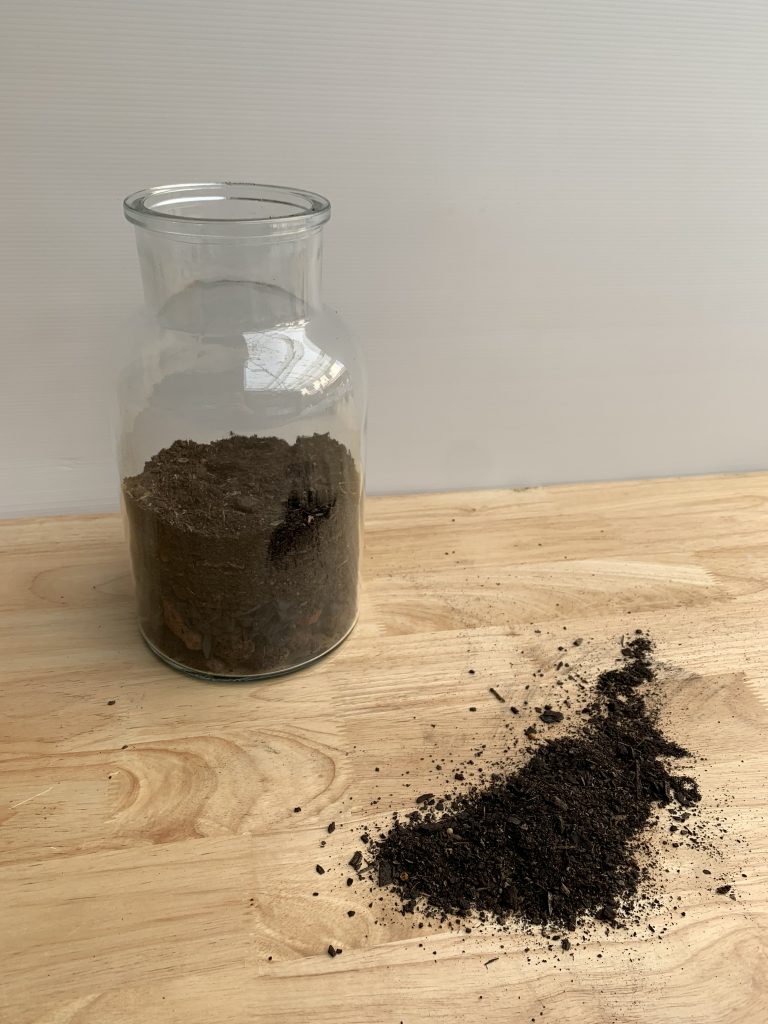
Step 3
Add a layer of potting compost or soil on top of this (approximately 3-5 cm’s depending on the size of your container). The plants need enough soil to grow in. *Tip – use a funnel to add soil into the container.
You can get creative alternating layers of soil then sand or pebbles to make patterns. Just make sure the top layer has enough soil for planting.
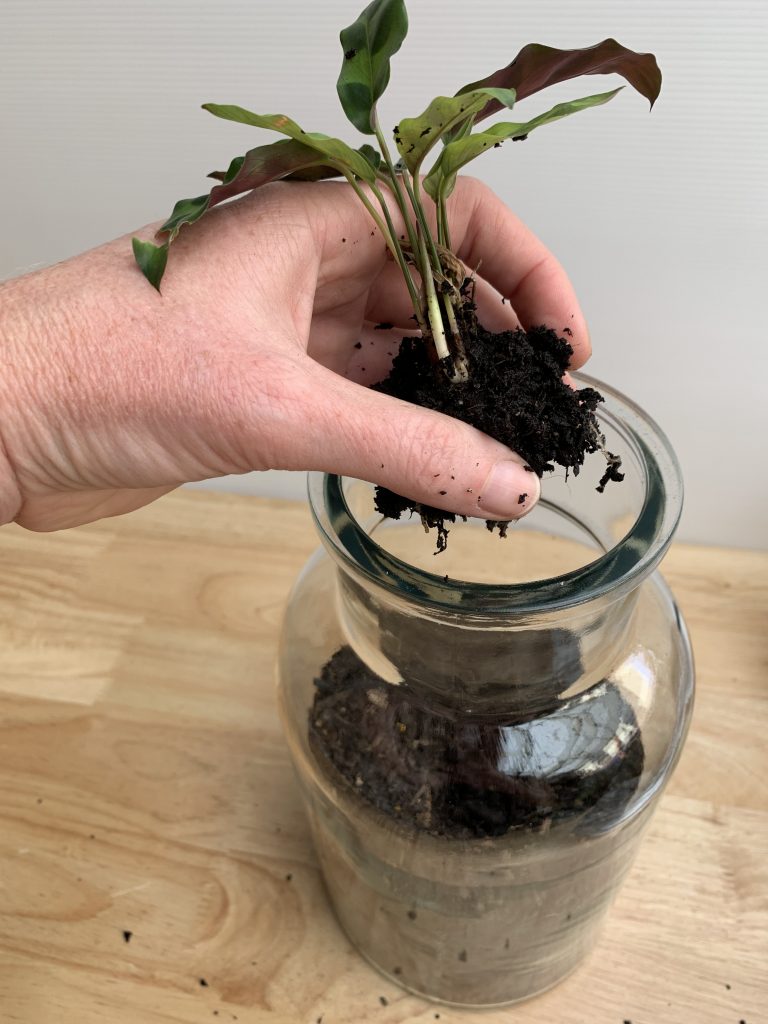
Step 4
Use a stick or spoon to make a crater where you want your plant/s to go. Depending on the size of the container opening, you can either use your hands, tongs, chopsticks or tweezers to place the plant. Then gently cover the roots with soil. Moss is great to add around other plants on the top layer of your terrarium as they have shallow root-like growths that attach easily to soil or rock/stone.
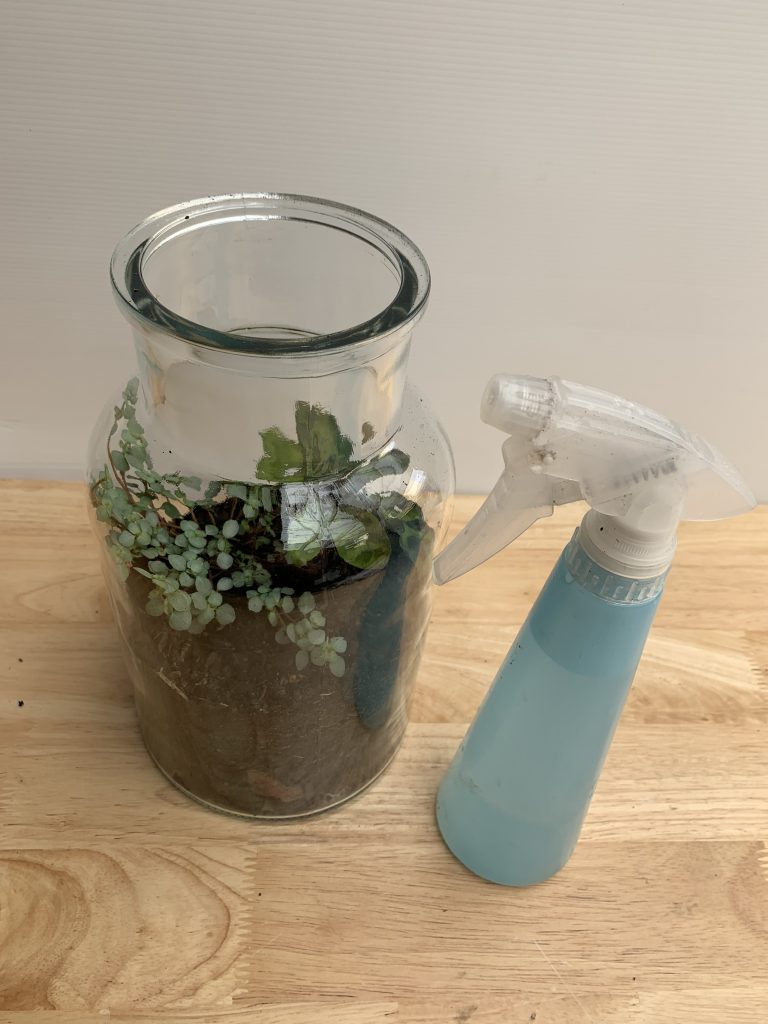
Step 5
Once your plants are where you want them, use a spray bottle or cup some water in your hand to rinse the interior sides of the terrarium. This helps remove any ingredients that have stuck to the side and will also provide just enough moisture for the plants to kick-start their new life in the terrarium.
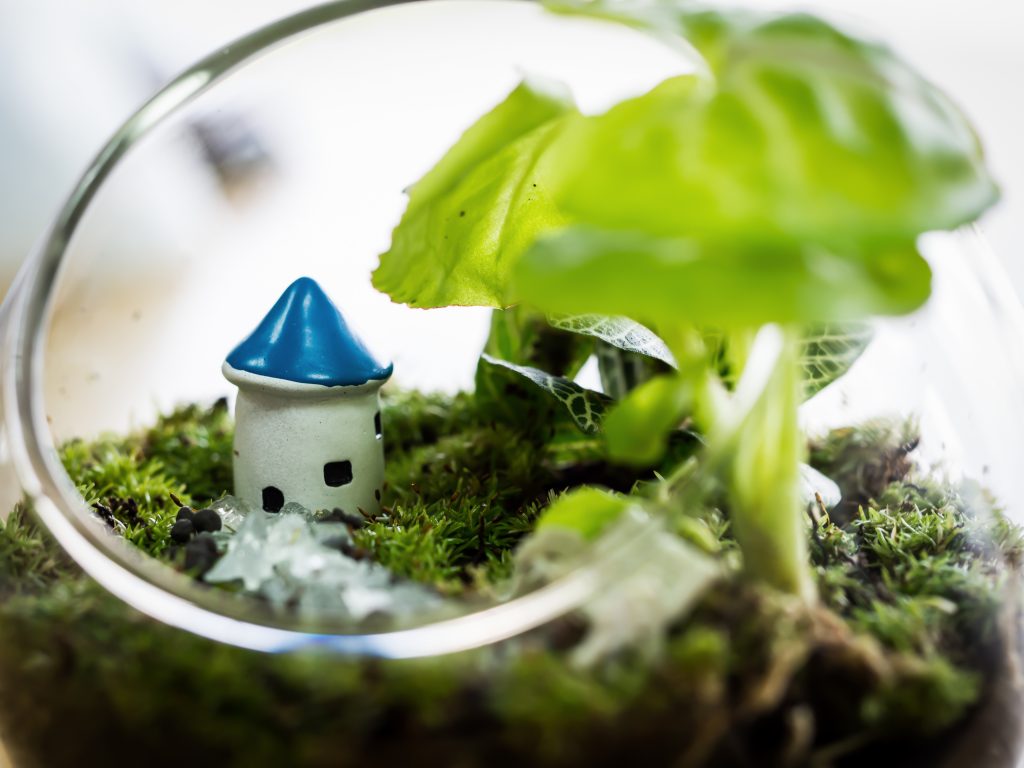
Optional – add decorations
There’s no end to the mini world you can create! Perhaps you’d like to add some mini toys, crystals, a cocktail umbrella, interesting rocks, sticks, mini driftwood, rocks, pebbles or sand?
Once you are happy with your terrarium, put the lid on and find the perfect position where it has access to bright, indirect light.
Caring for your terrarium
Sealed terrariums require little watering. Check regularly to see if the soil is still moist and water as needed. Make sure to remove and trim off dead or browned vegetation as well as leaves that have started to touch the inside of the container. Remove any plants that are rotting. If plants are rotting you may be watering too much. Sealed terrariums will sometimes fog up. Over time you may need to wipe the inside of the glass to get rid of any build up.
If you are going away, just put the lid of the terrarium on and know it will make its own moisture while you’re gone. If your terrarium starts to smell, try leaving the lid off for a brief time and also water less. Your plants may outgrow your terrarium over time. If this is the case, transport them to a larger terrarium (following the steps above) or trim/train the plant to fit the container space.
If you’d like support with greening up the indoor space at your preschool, please get in touch.


